Volatility, Growth and Financial Crises
This research group analyses the build-up of financial vulnerabilities and real consequences of financial crises. Different policy shocks and the causal reaction of macroeconomic aggregates are identified. Early-warning models describe the cyclical nature of financial vulnerabilities.
IWH Data Project: Financial Stability Indicators in Europe
Research Cluster
Financial Resilience and RegulationYour contact

- Department Macroeconomics
EXTERNAL FUNDING
01.2022 ‐ 12.2023
Sovereign Risk Shocks
05.2017 ‐ 09.2019
Early Warning Models for Systemic Banking Crises: The Effect of Model and Estimation Uncertainty
01.2018 ‐ 12.2018
International Monetary Policy Transmission
Refereed Publications
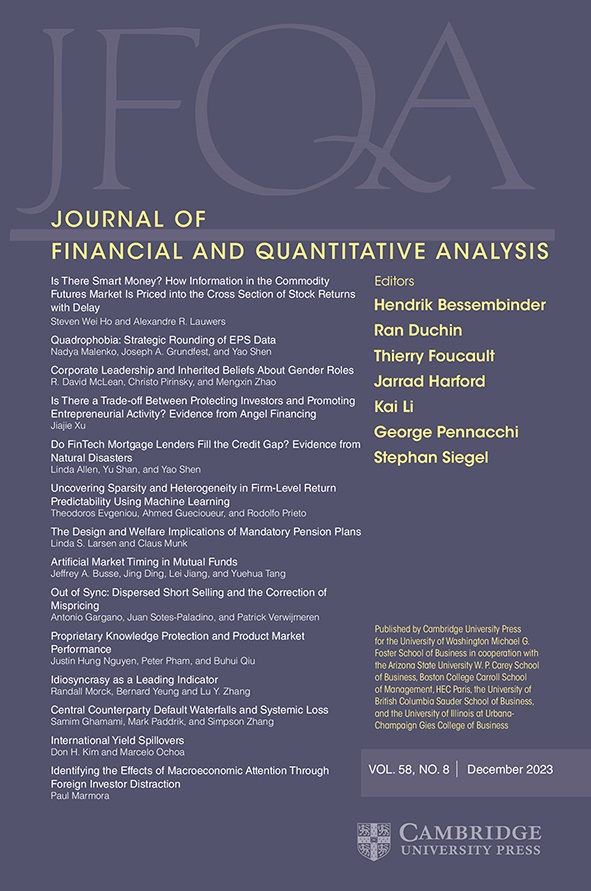
Spillover Effects among Financial Institutions: A State-dependent Sensitivity Value-at-Risk Approach
in: Journal of Financial and Quantitative Analysis, No. 3, 2014
Abstract
In this paper, we develop a state-dependent sensitivity value-at-risk (SDSVaR) approach that enables us to quantify the direction, size, and duration of risk spillovers among financial institutions as a function of the state of financial markets (tranquil, normal, and volatile). For four sets of major financial institutions (commercial banks, investment banks, hedge funds, and insurance companies) we show that while small during normal times, equivalent shocks lead to considerable spillover effects in volatile market periods. Commercial banks and, especially, hedge funds appear to play a major role in the transmission of shocks to other financial institutions.
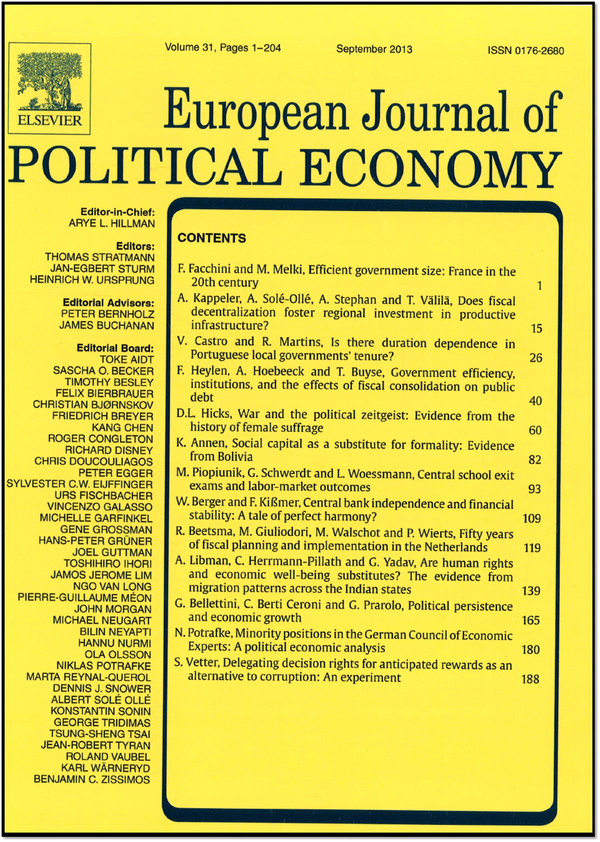
The Impact of Preferences on Early Warning Systems - The Case of the European Commission's Scoreboard
in: European Journal of Political Economy, 2014
Abstract
The European Commission’s Scoreboard of Macroeconomic Imbalances is a rare case of a publicly released early warning system. It allows the preferences of the politicians involved to be analysed with regard to the two potential errors of an early warning system – missing a crisis and issuing a false alarm. These preferences might differ with the institutional setting. Such an analysis is done for the first time in this article for early warning systems in general by using a standard signals approach, including a preference-based optimisation approach, to set thresholds. It is shown that, in general, the thresholds of the Commission’s Scoreboard are set low (resulting in more alarm signals), as compared to a neutral stand. Based on political economy considerations the result could have been expected.

Explosive Preisentwicklung und spekulative Blasen auf Rohstoffmärkten
in: ORDO, No. 64, 2013
Abstract
In dieser Studie wird untersucht, ob die Preisentwicklung auf Rohstoffmärkten statistische Anhaltspunkte für spekulative Preisblasen liefert. Diese Frage ist von zentraler Bedeutung in der wirtschaftspolitischen Debatte um die Regulierung des Handels von Rohstoffen. Es kann statistisch gezeigt werden, dass sich Rohstoffpreise gelegentlich explosiv verhalten. Die stärkste Evidenz für explosives Verhalten gibt es bei den Industrierohstoffen. Auch bei Nahrungsmittelpreisen können Phasen explosiven Verhaltens statistisch nachgewiesen werden. Eine wichtige Schlussfolgerung ist, dass die Ursachen explosiven Verhaltens auf Rohstoffmärkten und die Effekte von Preisblasen auf die Entscheidungen von Konsumenten und Investoren sowie Verteilungseffekte systematisch untersucht werden müssen.

Exchange Rate Regime, Real Misalignment and Currency Crises
in: Economic Modelling, No. 34, 2013
Abstract
Based on 69 sample countries, this paper examines the effect of macroeconomic fundamentals on real effective exchange rates (REER) in these sample countries. Using the misalignment of actual REER from its equilibrium level, we have estimated the factors explaining the extent of currency over- or under-valuation. Overall, we find that the higher the flexibility of the currency regime, the lower is the misalignment. The estimates are robust to different sub-samples of countries. We then explore the impact of such misalignment on the probability of a currency crisis in the next period, indicating the extent to which misalignment could be used as a leading indicator of a potential crisis. This paper thus makes a new contribution to the debate on the choice of exchange rate regime by bringing together real exchange rate misalignment and currency crisis literature.
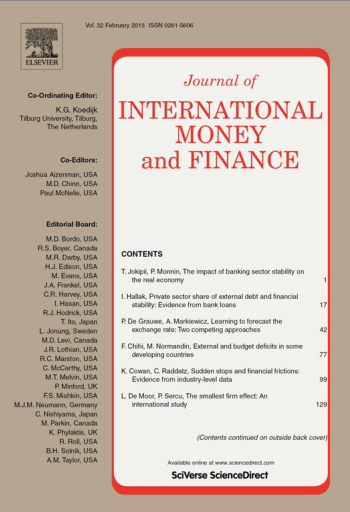
Predicting Financial Crises: The (Statistical) Significance of the Signals Approach
in: Journal of International Money and Finance, No. 35, 2013
Abstract
The signals approach as an early-warning system has been fairly successful in detecting crises, but it has so far failed to gain popularity in the scientific community because it cannot distinguish between randomly achieved in-sample fit and true predictive power. To overcome this obstacle, we test the null hypothesis of no correlation between indicators and crisis probability in three applications of the signals approach to different crisis types. To that end, we propose bootstraps specifically tailored to the characteristics of the respective datasets. We find (1) that previous applications of the signals approach yield economically meaningful results; (2) that composite indicators aggregating information contained in individual indicators add value to the signals approach; and (3) that indicators which are found to be significant in-sample usually perform similarly well out-of-sample.
Working Papers
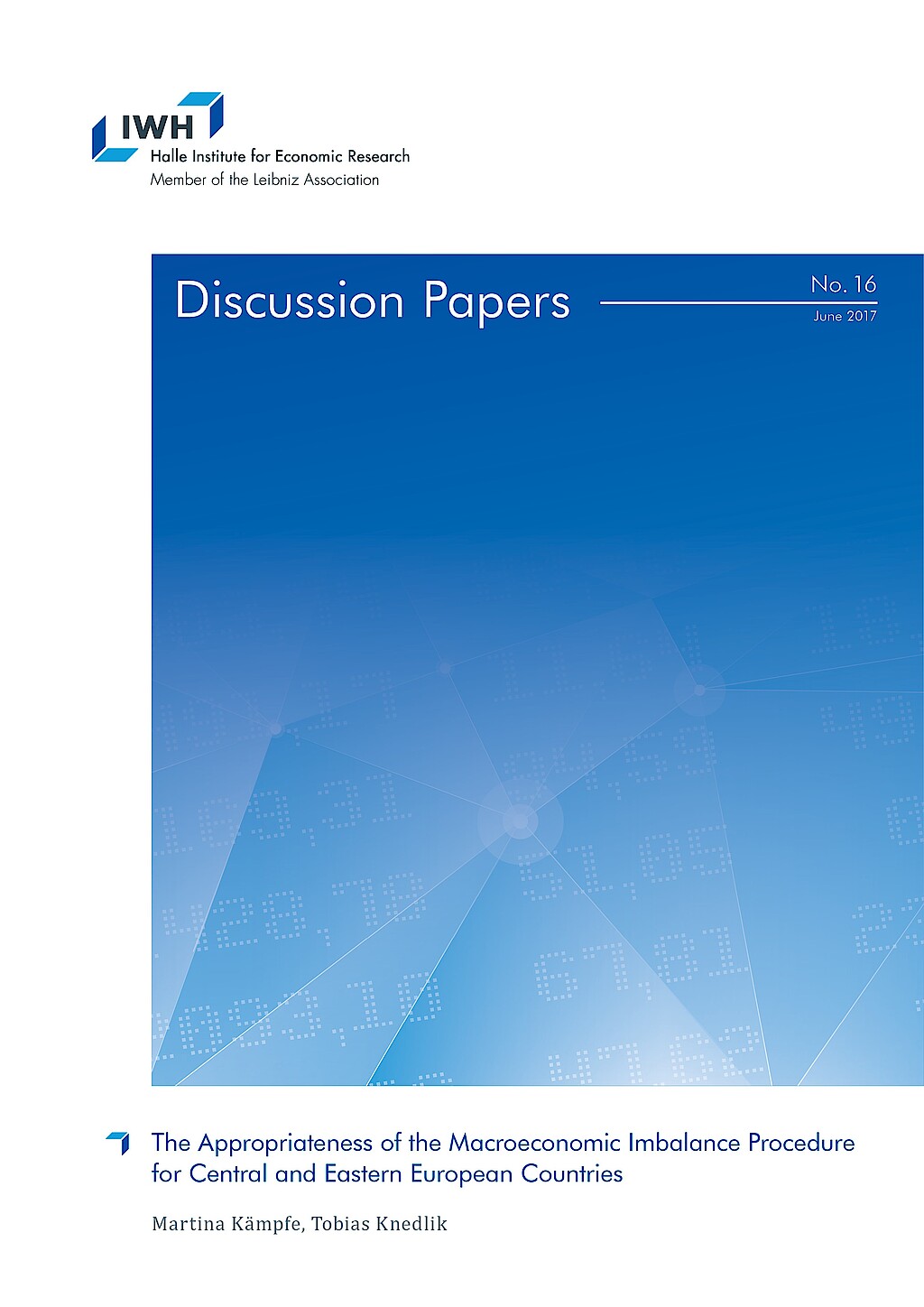
The Appropriateness of the Macroeconomic Imbalance Procedure for Central and Eastern European Countries
in: IWH Discussion Papers, No. 16, 2017
Abstract
The experience of Central and Eastern European countries (CEEC) during the global financial crisis and in the resulting European debt crises has been largely different from that of other European countries. This paper looks at the specifics of the CEEC in recent history and focuses in particular on the appropriateness of the Macroeconomic Imbalances Procedure for this group of countries. In doing so, the macroeconomic situation in the CEEC is highlighted and macroeconomic problems faced by these countries are extracted. The findings are compared to the results of the Macroeconomic Imbalances Procedure of the European Commission. It is shown that while the Macroeconomic Imbalances Procedure correctly identifies some of the problems, it understates or overstates other problems. This is due to the specific construction of the broadened surveillance procedure, which largely disregarded the specifics of catching-up economies.

Inflation Dynamics During the Financial Crisis in Europe: Cross-sectional Identification of Long-run Inflation Expectations
in: IWH Discussion Papers, No. 10, 2017
Abstract
We investigate drivers of Euro area inflation dynamics using a panel of regional Phillips curves and identify long-run inflation expectations by exploiting the crosssectional dimension of the data. Our approach simultaneously allows for the inclusion of country-specific inflation and unemployment-gaps, as well as time-varying parameters. Our preferred panel specification outperforms various aggregate, uni- and multivariate unobserved component models in terms of forecast accuracy. We find that declining long-run trend inflation expectations and rising inflation persistence indicate an altered risk of inflation expectations de-anchoring. Lower trend inflation, and persistently negative unemployment-gaps, a slightly increasing Phillips curve slope and the downward pressure of low oil prices mainly explain the low inflation rate during the recent years.
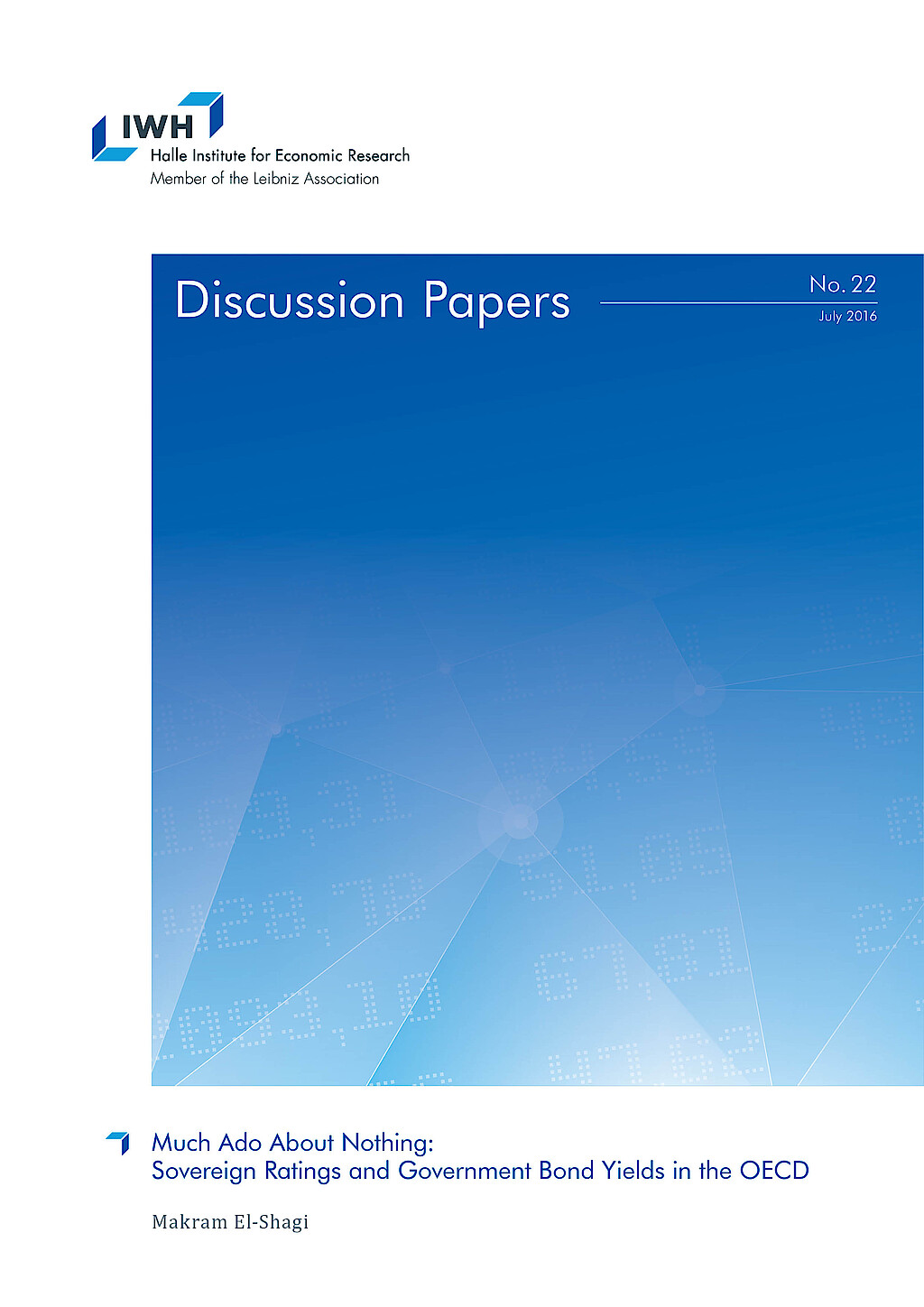
Much Ado About Nothing: Sovereign Ratings and Government Bond Yields in the OECD
in: IWH Discussion Papers, No. 22, 2016
Abstract
In this paper, we propose a new method to assess the impact of sovereign ratings on sovereign bond yields. We estimate the impulse response of the interest rate, following a change in the rating. Since ratings are ordinal and moreover extremely persistent, it proves difficult to estimate those impulse response functions using a VAR modeling ratings, yields and other macroeconomic indicators. However, given the highly stochastic nature of the precise timing of ratings, we can treat most rating adjustments as shocks. We thus no longer rely on a VAR for shock identification, making the estimation of the corresponding IRFs well suited for so called local projections – that is estimating impulse response functions through a series of separate direct forecasts over different horizons. Yet, the rare occurrence of ratings makes impulse response functions estimated through that procedure highly sensitive to individual observations, resulting in implausibly volatile impulse responses. We propose an augmentation to restrict jointly estimated local projections in a way that produces economically plausible impulse response functions.

Exit Expectations and Debt Crises in Currency Unions
in: IWH Discussion Papers, No. 18, 2015
Abstract
Membership in a currency union is not irreversible. Exit expectations may emerge during sovereign debt crises, because exit allows countries to reduce their liabilities through a currency redenomination. As market participants anticipate this possibility, sovereign debt crises intensify. We establish this formally within a small open economy model of changing policy regimes. The model permits explosive dynamics of debt and sovereign yields inside currency unions and allows us to distinguish between exit expectations and those of an outright default. By estimating the model on Greek data, we quantify the contribution of exit expectations to the crisis dynamics during 2009 to 2012.

Flight Patterns and Yields of European Government Bonds
in: IWH Discussion Papers, No. 10, 2013
Abstract
The current European Debt Crisis has led to a reinforced effort to identify the sources of risk and their influence on yields of European Government Bonds. Until now, the potentially nonlinear influence and the theoretical need for interactions reflecting flight-to-quality and flight-to-liquidity has been widely disregarded. I estimate government bond yields of the Euro-12 countries without Luxembourg from May 2003 until December 2011. Using penalized spline regression, I find that the effect of most explanatory variables is highly nonlinear. These nonlinearities, together with flight patterns of flight-to-quality and flight-to-liquidity, can explain the co-movement of bond yields until September 2008 and the huge amount of differentiation during the financial and the European debt crisis without the unnecessary assumption of a structural break. The main effects are credit risk and flight-to-liquidity, while the evidence for the existence of flight-to-quality and liquidity risk (the latter measured by the bid-ask spread and total turnover of bonds) is comparably weak.














